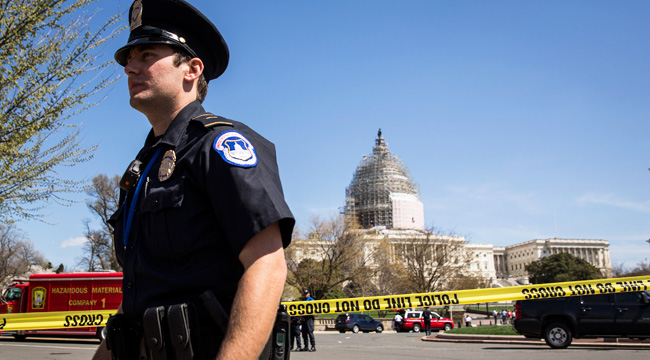
Police brutality is on everyone’s mind following the shooting deaths of Alton Sterling and Philando Castile with anti-brutality protests taking place in many U.S. cities over the past week. The protest in Dallas ended in tragedy after five officers were killed by sniper Micah Xavier Johnson. Other events varied with Oklahoma City’s Sunday rally ending in handshakes and hugs while Baton Rouge saw riot gear and arrests throughout the weekend.
With all the media focus upon these events, the New York Times dissected some timely research, which concludes that police brutality does not confine itself to one community. The paper digs into a National Bureau of Economic Research study that reveals that, indeed, black men and women are more likely to be on the receiving end of rough treatment (i.e., pepper spray or manhandling). Yet they are no more likely than white people to be the victims of a police shooting death. The study’s author expresses his own shock:
“It is the most surprising result of my career,” said Roland G. Fryer Jr., the author of the study and a professor of economics at Harvard. The study examined more than a thousand shootings in 10 major police departments, in Texas, Florida and California.
Mr. Fryer said his anger after the deaths of Michael Brown and Freddie Gray and others drove him to study the issue. “You know, protesting is not my thing,” he said. “But data is my thing. So I decided that I was going to collect a bunch of data and try to understand what really is going on when it comes to racial differences in police use of force.”
The study was fairly cut-and-dry and didn’t examine whether the most high-profile killings were motivated by racial bias. Fryer simply took note of the amount of force used in each encounter and the methods employed by police. The data also didn’t reach Chicago, which lies at the heart of many concerned parties. Ten areas — Austin, Dallas, Houston, Jacksonville, Los Angeles, Orlando, plus four other metro areas in Florida — were the focus of the study. The data seems pretty straightforward:
They examined 1,332 shootings between 2000 and 2015, systematically coding police narratives to answer questions such as: How old was the suspect? How many police officers were at the scene? Were they mostly white? Was the officer at the scene for a robbery, violent activity, a traffic stop or something else? Was it nighttime? Did the officer shoot after being attacked or before a possible attack? One goal was to figure out whether police officers were quicker to fire at black suspects.
All told, 3,000 hours went into the study, which included labor from Fryer and his student researchers. The study didn’t examine possible motives of the officers, and it included non-fatal shootings. But essentially, the data speaks for itself — officer-involved shootings in these particular areas equally involved white and black victims if both groups possessed weapons. And in the case of a white suspect who did not attack the police first, he was actually more likely to be fired upon than if a black suspect was involved. Tense situations followed a similar pattern:
And in the arena of “shoot” or “don’t shoot,” Mr. Fryer found that, in tense situations, officers in Houston were about 20 percent less likely to shoot a suspect if the suspect was black. This estimate was not very precise, and firmer conclusions would require more data. But, in a variety of models that controlled for different factors and used different definitions of tense situations, Mr. Fryer found that blacks were either less likely to be shot or there was no difference between blacks and whites
Ultimately, the study doesn’t dig too far into causes for such discrepancies, but the hard data cannot be ignored. According to Fryer and his associates, the study doesn’t reveal any racial bias in officer-involved shootings. Fryer and the New York Times both note that results may not necessarily apply to all U.S. cities, but the study does unearth some doubt to the commonly accepted idea that lethal force is more common when police encounter black suspects. The entire breakdown can be read here.
(Via New York Times)
